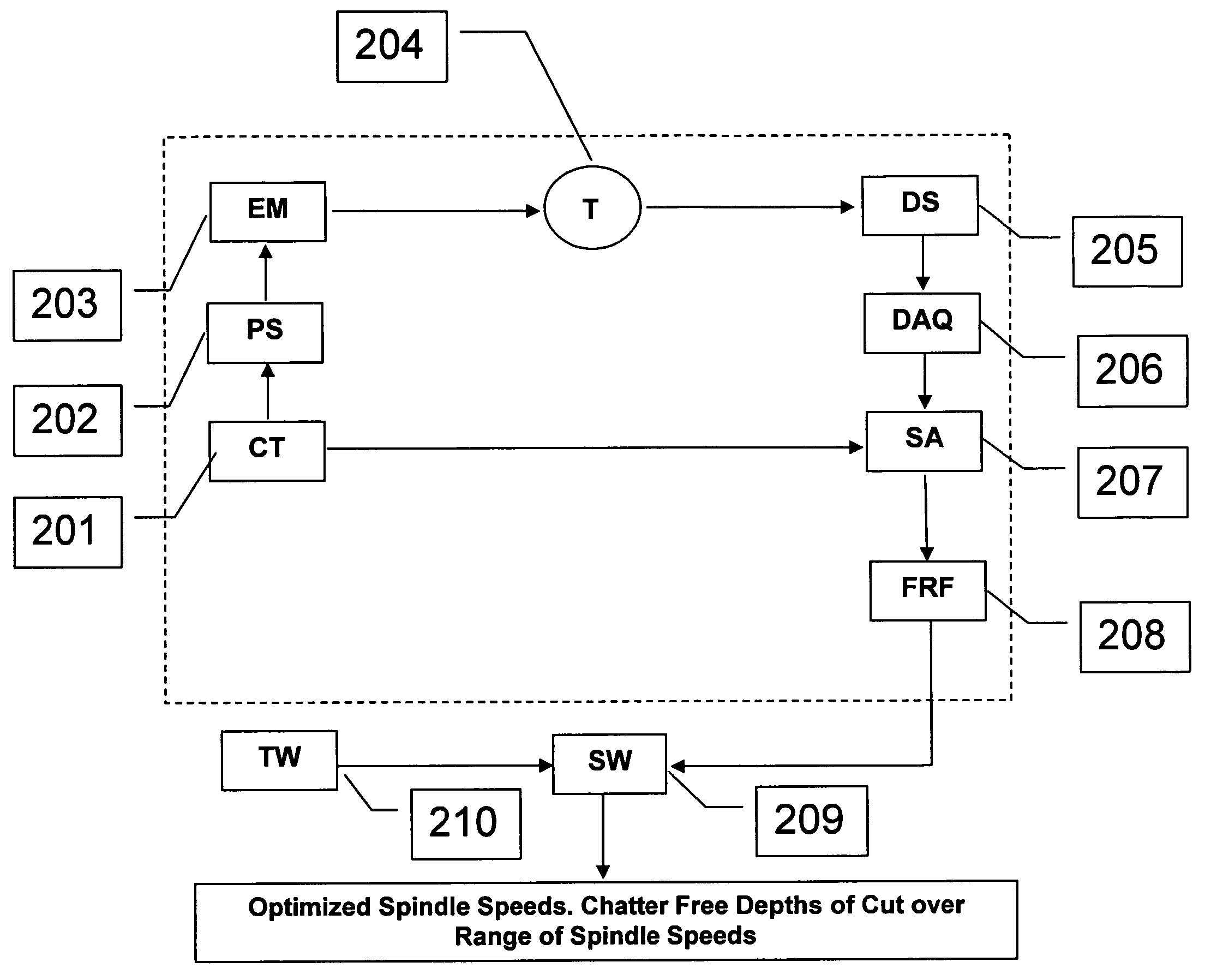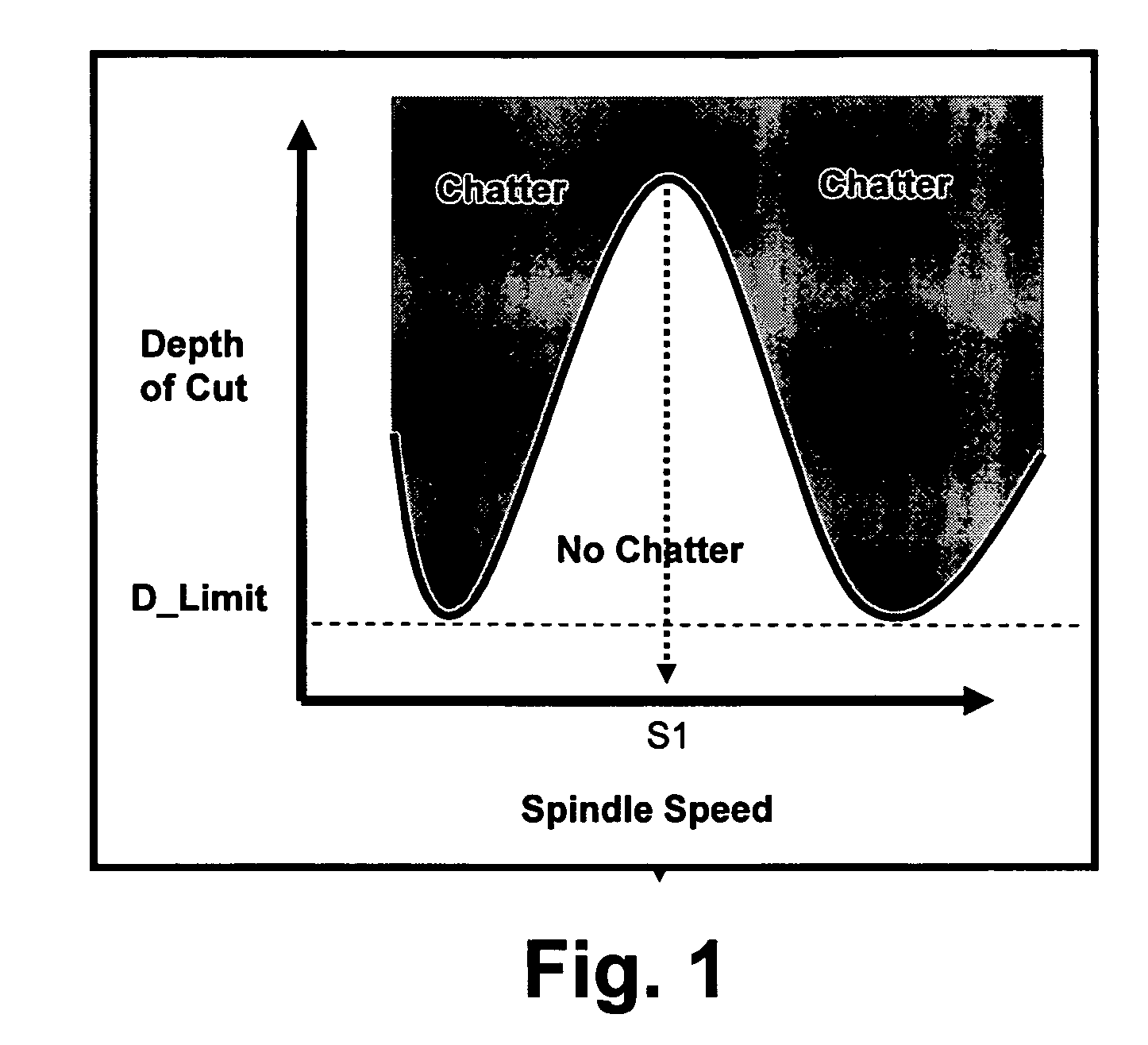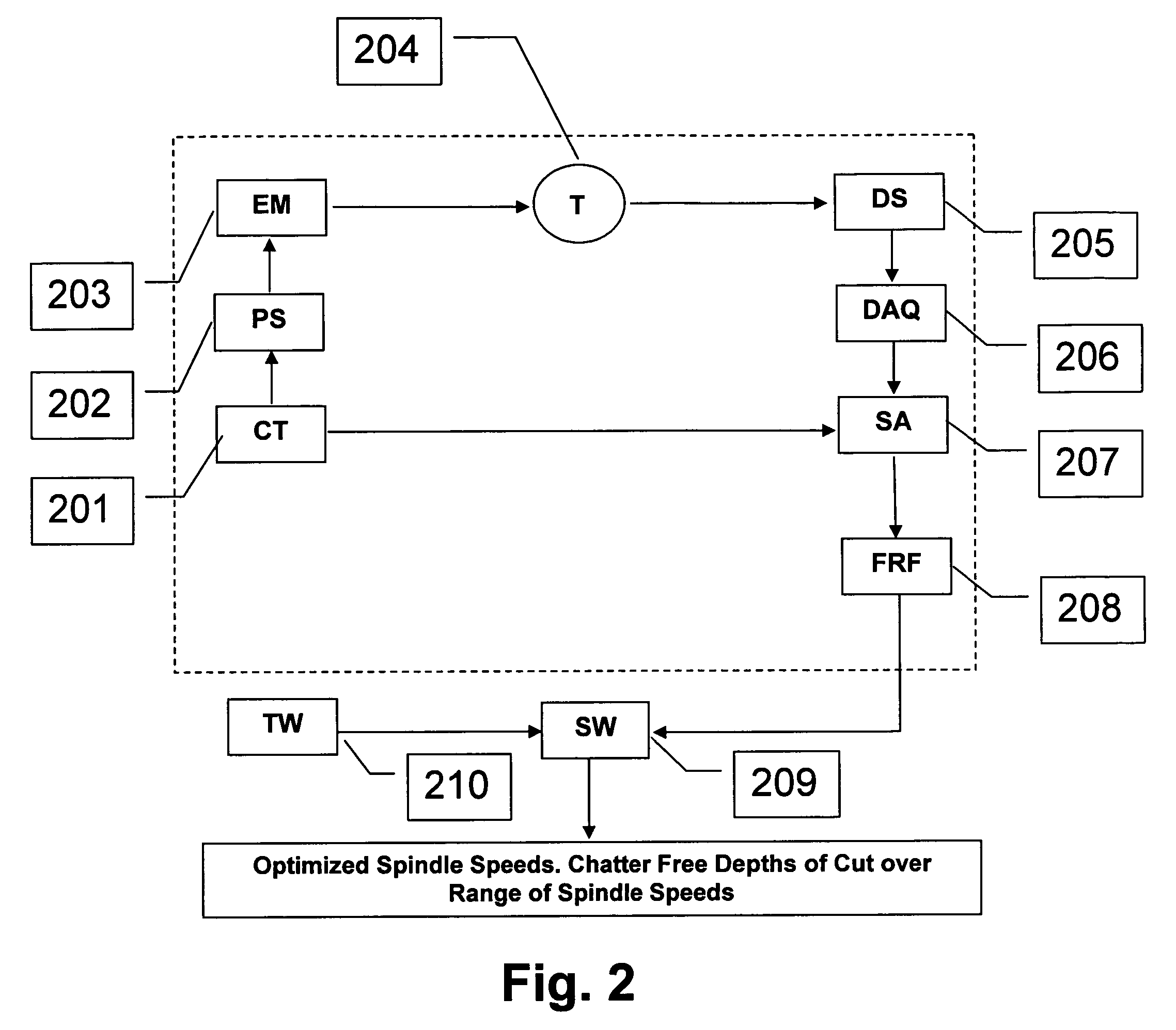Active electromagnetic device for measuring the dynamic response of a tool in a CNC machine
a technology of cnc machine and dynamic response, which is applied in the field of noncontact devices for measuring the dynamic response of cnc machines, can solve the problems of high speed, inability to achieve many cnc machines, and inability to test and interpr
- Summary
- Abstract
- Description
- Claims
- Application Information
AI Technical Summary
Benefits of technology
Problems solved by technology
Method used
Image
Examples
example
[0078]A test version of the present invention was developed for a milling environment.
[0079]The test version consisted of a tool sited in a CNC machine, an electromagnetic actuator, voltage detectors, a power supply, a controller board to control the power output to the actuator and a user interface device. The later informs the user when the tool is properly sited relative to the electromagnetic actuator, starts the measurement process and records the data. The user interface device for the example was a laptop computer.
[0080]FIG. 3 is a schematic planar cross-sectional view of the device. The electromagnet 101 is driven by an alternating current applied to a wire coli 102. The electromagnet induces a force on a magnetically active tool 103, causing a displacement which is measured by a sensor 104. The force applied to the tool 103 is controlled by the current supplied to the coil 102. By applying currents with different frequency profiles to the electromagnet, a frequency dependen...
PUM
| Property | Measurement | Unit |
|---|---|---|
| frequency | aaaaa | aaaaa |
| length | aaaaa | aaaaa |
| resonant frequency | aaaaa | aaaaa |
Abstract
Description
Claims
Application Information
 Login to View More
Login to View More - R&D
- Intellectual Property
- Life Sciences
- Materials
- Tech Scout
- Unparalleled Data Quality
- Higher Quality Content
- 60% Fewer Hallucinations
Browse by: Latest US Patents, China's latest patents, Technical Efficacy Thesaurus, Application Domain, Technology Topic, Popular Technical Reports.
© 2025 PatSnap. All rights reserved.Legal|Privacy policy|Modern Slavery Act Transparency Statement|Sitemap|About US| Contact US: help@patsnap.com



